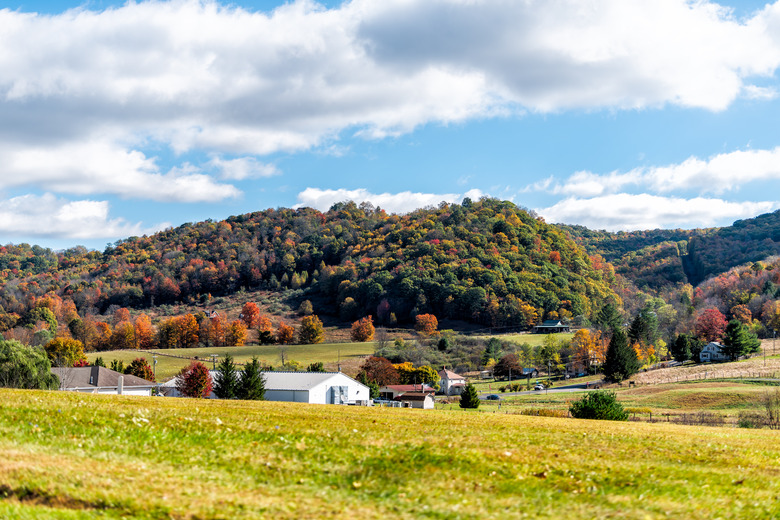What Are The Causes Of High CO2 Levels In The House?
We may receive a commission on purchases made from links.
A colorless, odorless gas at room temperature, carbon dioxide (CO2) is an abundant substance that can be a liquid or a solid known as dry ice. Normal cell function produces carbon dioxide, and humans expel carbon dioxide when they exhale. Dying plants and burning fossil fuels produce carbon dioxide. All houses have a presence of carbon dioxide, with some causes creating high levels, including certain appliances and lack of ventilation.
Tip
Carbon dioxide is created through many normal processes, but it can also build up in your home due to poor ventilation and some appliances.
Buildup in Soil
Buildup in Soil
The soil underneath a house contains carbon dioxide naturally from decaying plants and animals. If the soil was used in farming, it contains fertilizers, manure and other nutrients applied to the soil to increase productivity. Many times farm land is converted into housing developments.
When that occurs, the high levels of carbon dioxide can enter the house. The process involves the CO2 gas being drawn out of the soil into the house. The difference in air pressure between the house and the soil causes the house to suck up the carbon dioxide gas from the soil into the home.
Lack of Fresh Air
Lack of Fresh Air
Carbon dioxide builds up in a house, whether from the gas being drawn up from the soil or from the activities of humans and pets inside the home. High levels of carbon dioxide will appear inside your home if you have poor home ventilation and the indoor air doesn't circulate regularly. Newer homes are often built to be more airtight than older homes for energy efficiency, but that also reduces how much fresh air enters the home.
Levels tend to be higher in the areas of the house where the occupants and pets spend most of their time. An indication that the levels are getting higher would be accelerated activity by plants that thrive on carbon dioxide.
Operation of Some Appliances
Operation of Some Appliances
Certain appliances in a house can cause elevated levels of carbon dioxide. These include space heaters, dryers, stoves and any other unvented gas appliance. One way to prevent the buildup is to make sure all appliances are properly vented. The appliances should be regularly checked to ensure they are functioning properly. You can get carbon dioxide detectors for home use that can be another way to verify that your appliances are not causing a problem.
Improper HVAC System Operation
Improper HVAC System Operation
An improper heating, ventilation and air conditioning system (HVAC) can lead to high levels of carbon dioxide. Many homes rely totally on the HVAC system to recirculate air; the windows are never opened to let in fresh air. If the HVAC system can't keep up with the home's ventilation needs, higher levels of carbon dioxide can build up indoors.
Problems With High CO2 Levels
Problems With High CO2 Levels
If the carbon dioxide levels get too high, you might start noticing physical signs of an issue. Symptoms of high CO2 include headaches, dizziness, difficulty breathing, fatigue and increased heart rate. Basically, the high CO2 deprives the body of its needed oxygen, especially the brain.
Levels under 1,000 ppm are often fine and are found in homes with good air exchange. When the level increases to 1,000 to 2,000 ppm, it can cause you to feel drowsy. At levels between 2,000 and 5,000 ppm, you can experience more severe symptoms.
